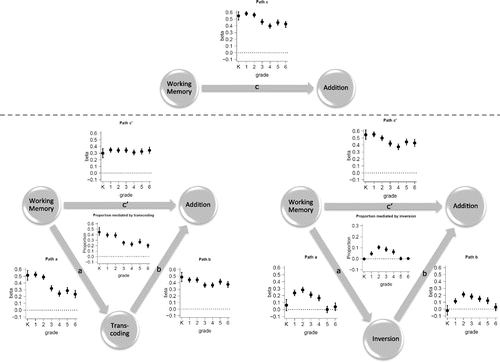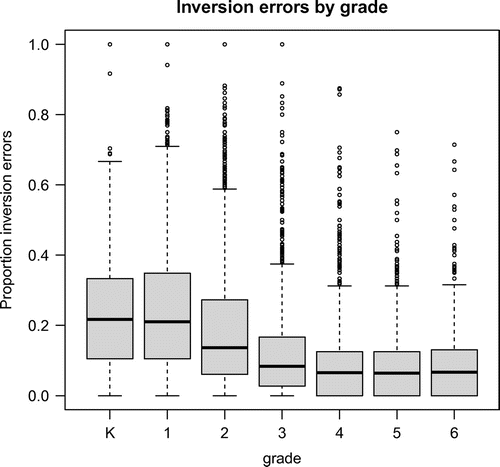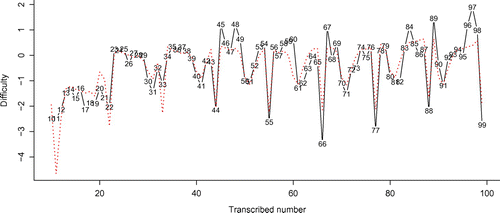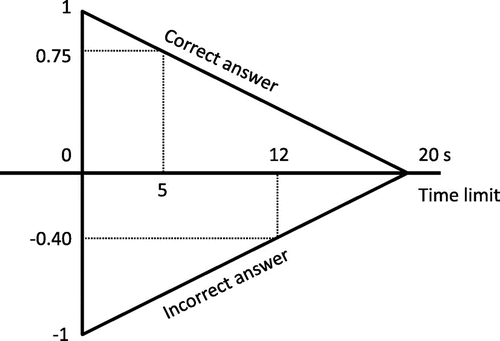Figures & data
Figure 2. Problem difficulty and child ability estimates by grade. The horizontal axis displays child ability and problem difficulty: both on the same scale. The further towards the right, the more able the child and the more difficult the problem.
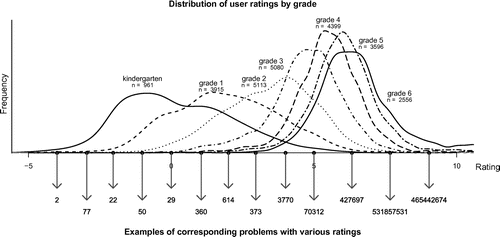
Figure 4. Results of the mediation analyses by grade: the relation between visuospatial working memory and addition ability, mediated by transcoding ability (upper figure) and inversion accuracy (lower figure). The sizes of the coefficients are presented adjacent to each path of the analysis. The middle graph displays the proportion of the total effect that is explained by the indirect path: .
